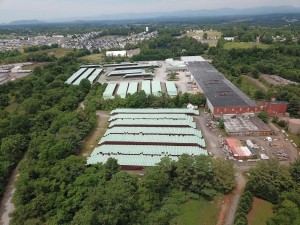From an Article by Sue Sturgis, Institute for Southern Studies, July 27, 2020
While Dominion Energy and Duke Energy recently canceled the Atlantic Coast Pipeline (ACP) that had been planned to carry fracked gas from West Virginia to Virginia and North Carolina, number of large epoxy-coated steel pipes for the project that remain stored improperly outside, posing immediate toxic risks to nearby communities and increasing the risk of explosion if the pipes are eventually used elsewhere: 80,000
Number of storage yards where the pipe is now being stockpiled in Virginia, West Virginia, and North Carolina, in some cases close to housing developments, public buildings, churches, shopping malls, golf courses, and major water bodies: 6*
Date on which the North Carolina climate justice group NC WARN filed with the Federal Energy Regulatory Commission a report about the pipe-coating corrosion problem written by William Limpert, a longtime environmental regulator in Maryland who used to own property along the ACP’s route in Virginia: 7/2/2020
According to a pipe coating trade association, maximum number of months pipes with this anti-corrosion coating — 3M Scotchkote Fusion Bonded Epoxy 6233 — should be left in the sun without protection from ultraviolet damage, which can break down the material and cause the carcinogenic, mutagenic, and other toxic substances it contains to be released into the environment: 6
Number of months for which ACP pipes have been exposed to sunlight: 48
Year in which the ACP submitted its own commissioned study to FERC claiming the coating does not threaten public health or the environment, conclusions the new report calls into question: 2019
Year by which evidence shows most of the ACP pipe already had degraded coating: 2017
According to 3M, typical rate of the coating’s degradation per year measured in thousandths of an inch, with the degradation happening faster in higher temperatures, higher humidity, and wetter conditions: 0.375 to 1.5
Percent of all adverse pipeline incidents, including explosions, that are caused by pipe corrosion: 18
In 2019 alone, number of pipeline explosions in the U.S. that injured or killed people: at least 8
Month in which the Virginia Department of Health and the Virginia Department of Environmental Quality sent a letter to FERC advising that epoxy resins similar to the 3M coating can leach out carcinogenic benzene and styrene, and requesting information on the coating’s possible public health and environmental impacts: 3/2019
Month in which the North Carolina Department of Health and Human Services wrote to FERC stating concerns about possible public health impacts from the coating, criticizing the methodology of the ACP’s own study, and asking FERC to require the ACP to provide more information: 10/2019
Written responses the Virginia and North Carolina agencies had received as of the Limpert report’s June 29 publication date: 0
Month in which FERC wrote to officials with the Mountain Valley Pipeline, which is being built to transport fracked gas from West Virginia to Virginia, asking for more information on the safety of the pipe coating, which is the same 3M product used on the ACP pipe: 7/2019
* – Morgantown, West Virginia; Culpeper, Bealeton, and Clarksville, Virginia; and Plymouth and Fuquay-Varina, North Carolina.
>>>>>>>>>>>>>>>>>>>>>>>>>>>>>>>>>>>
Most of the numerical data in this index are from the report “Continuing Health, Safety, and Environmental Threats From the Atlantic Coast Pipeline Pipe Coating” by William F. Limpert, June 29, 2020.)
####################################
See also: “Which One is It? Almost Heaven or Almost Hell WV” — From the Letter by Carol Nix, Morgantown Dominion Post, January 16, 2017

